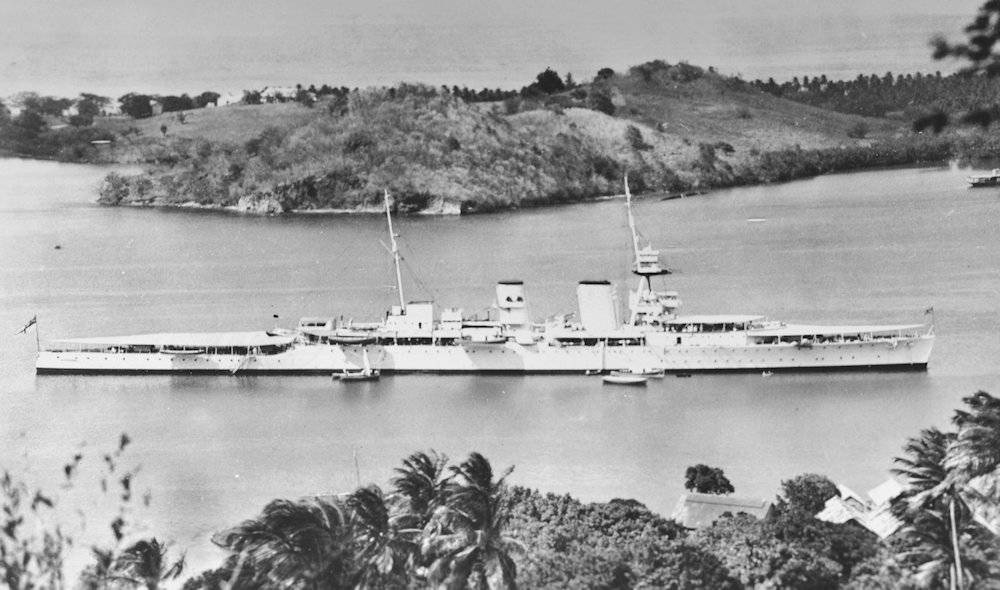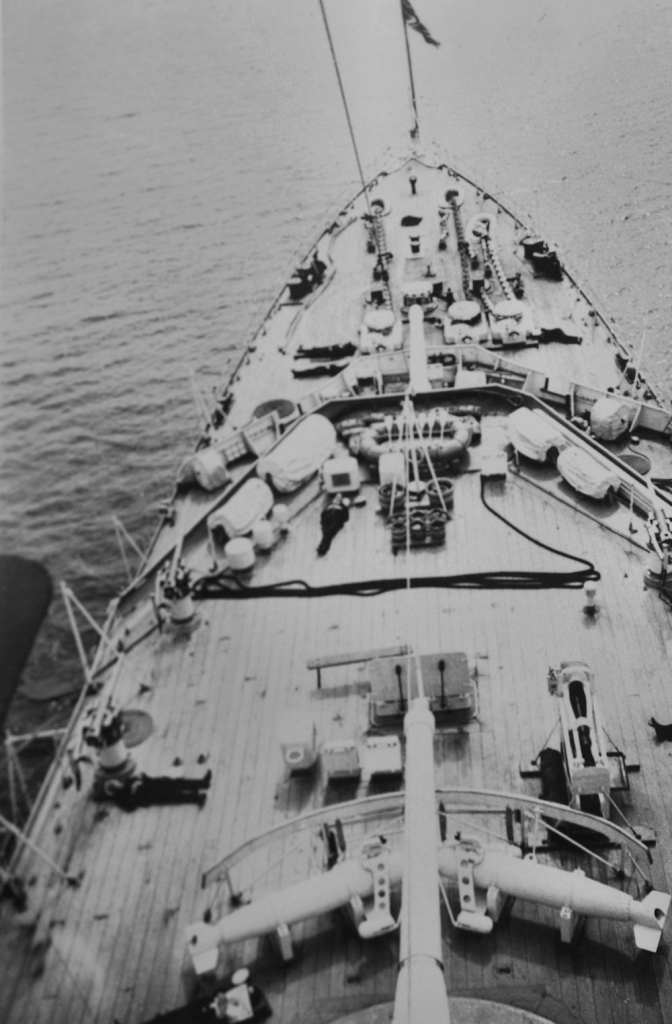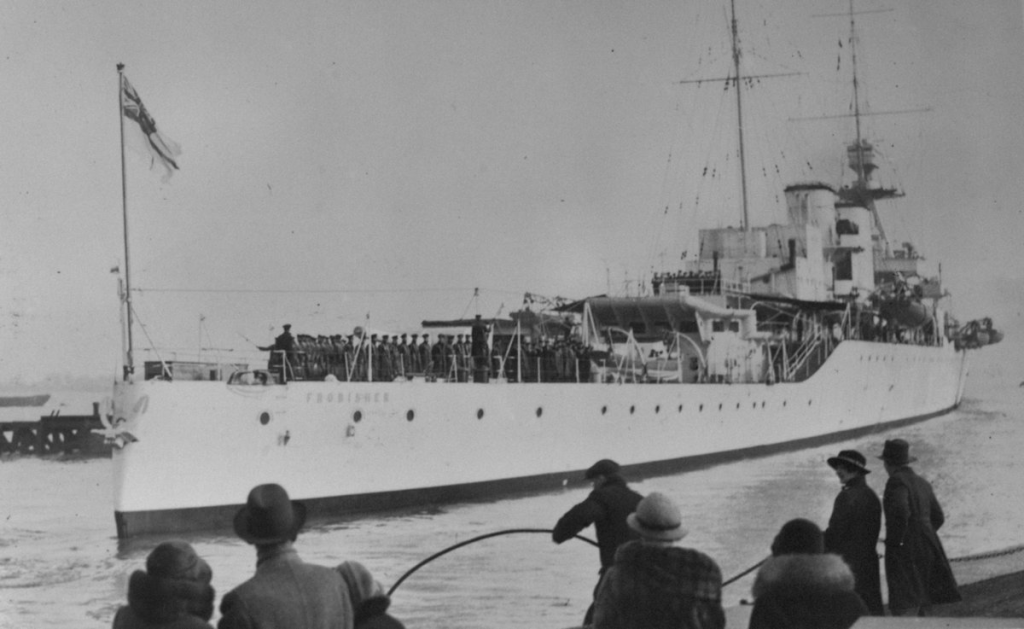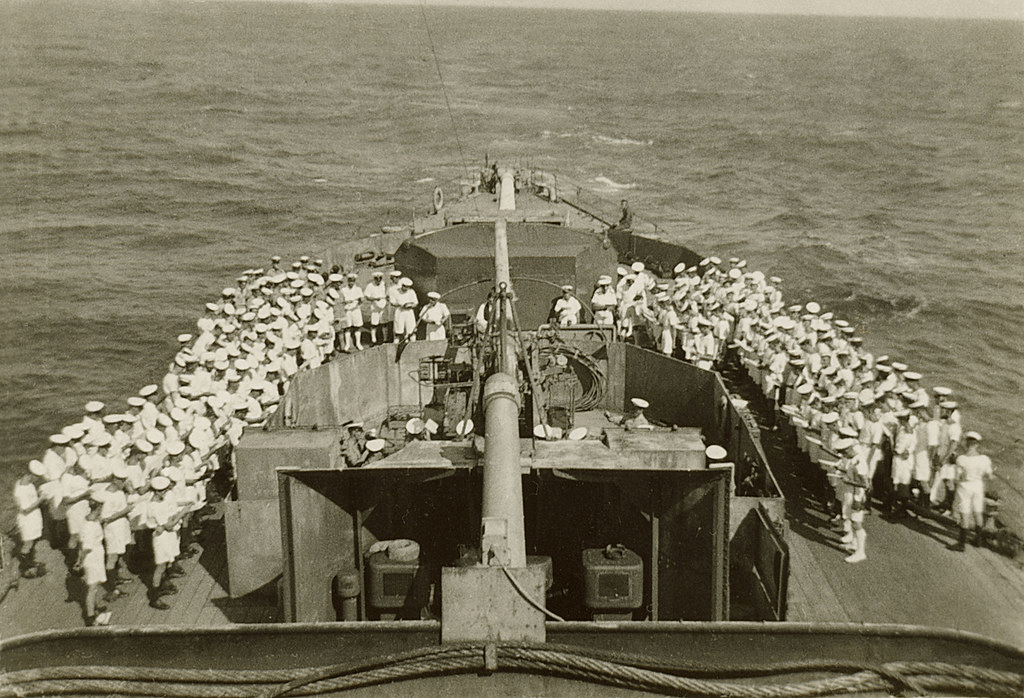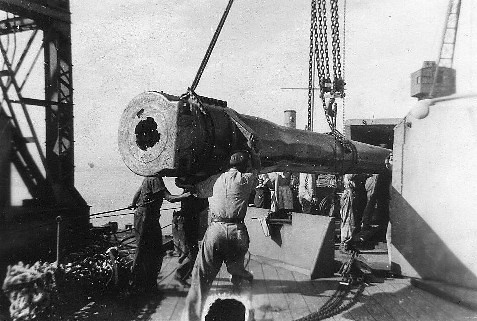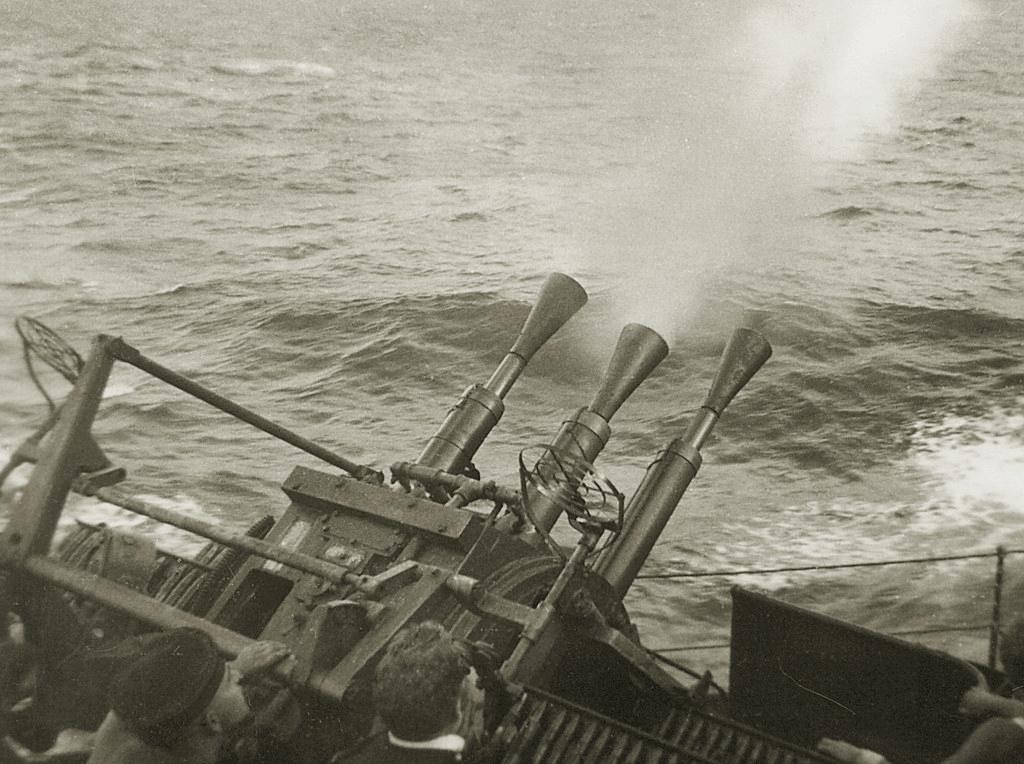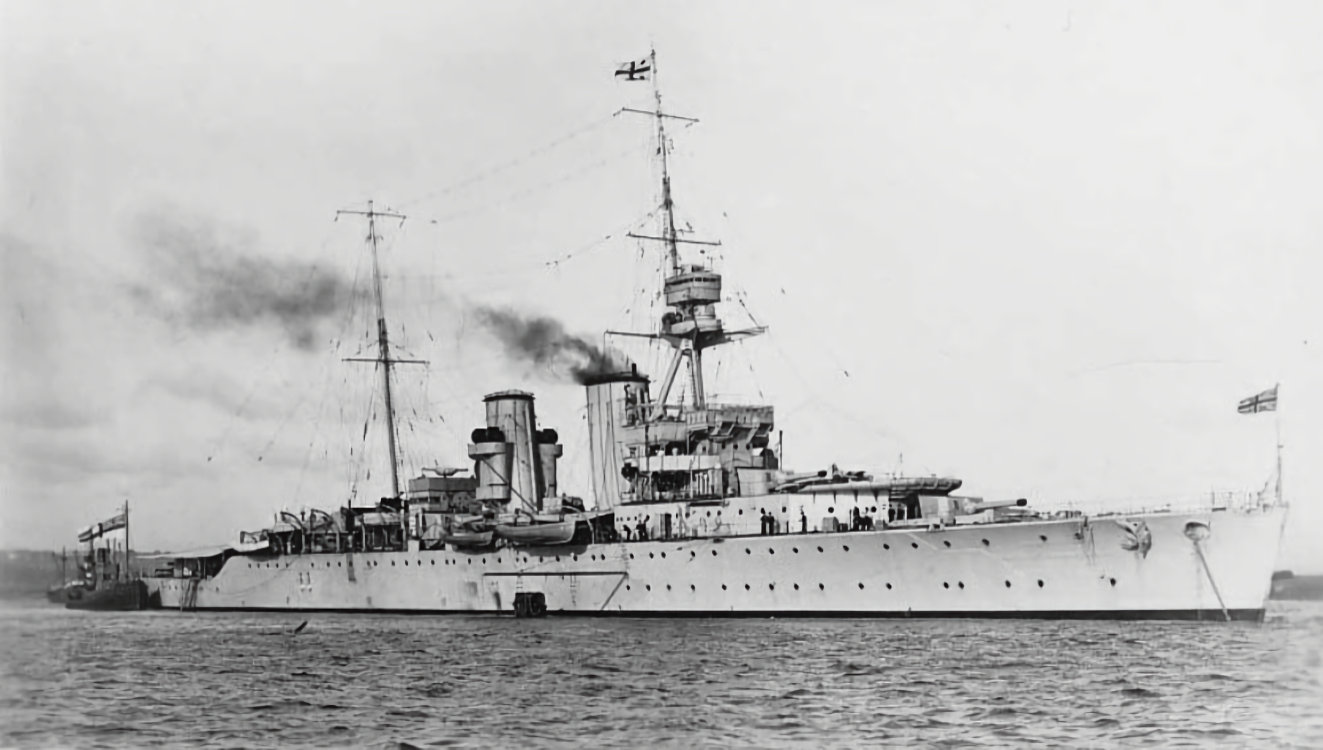British Heavy Cruiser HMS Frobisher
HMS Frobisher a Hawkins-class heavy cruiser (along with her sisters HMS Hawkins (the name ship), HMS Raleigh, HMS Effingham, and HMS Cavendish (later renamed Vindictive)) of the British Royal Navy. was commissioned on 20 September 1924 and initially served as flagship of the 1st Cruiser Squadron in the Mediterranean Fleet. During the late 1920s, she operated between the Mediterranean and Atlantic fleets, briefly serving on the China Station and participating in various fleet exercises. Her early service included experimental work with aircraft equipment, having a prototype catapult fitted in 1927-1928.
By 1930, Frobisher was placed in reserve due to naval budget constraints and two years later underwent her first major conversion into a cadet training ship. This transformation involved removing most of her armament and fitting training facilities. She served in this capacity until 1937, when she returned to reserve at Devonport, only to resume training duties at Portsmouth in 1939.
When World War II began, the Royal Navy decided to reconvert Frobisher back to a heavy cruiser, though the work proceeded slowly due to higher priorities for other vessels. The conversion was finally completed in March 1942, and she was assigned to the Eastern Fleet’s 4th Cruiser Squadron. For the next two years, she escorted convoys and capital ships in the Indian Ocean, notably assisting the damaged French cruiser Le Triomphant in December 1943.
Frobisher returned to Britain in March 1944 to prepare for the D-Day landings. On 6 June 1944, she participated in Operation Neptune as part of Gunfire Bombardment Support Force D, successfully targeting German coastal defenses at Sword Beach, including the destruction of a fire-control post at Ouistreham. However, her combat service was cut short in August 1944 when she was damaged by German torpedo boats in the Baie de la Seine.
While under repair at Chatham, the Royal Navy made the decision to convert Frobisher into a training ship for the third time. The conversion was completed in May 1945, and she served as a cadet training vessel until 1947, when she was replaced by HMS Devonshire. After 25 years of varied service, HMS Frobisher was sold for scrap on 26 March 1949 and broken up at Newport, Wales, that May.

